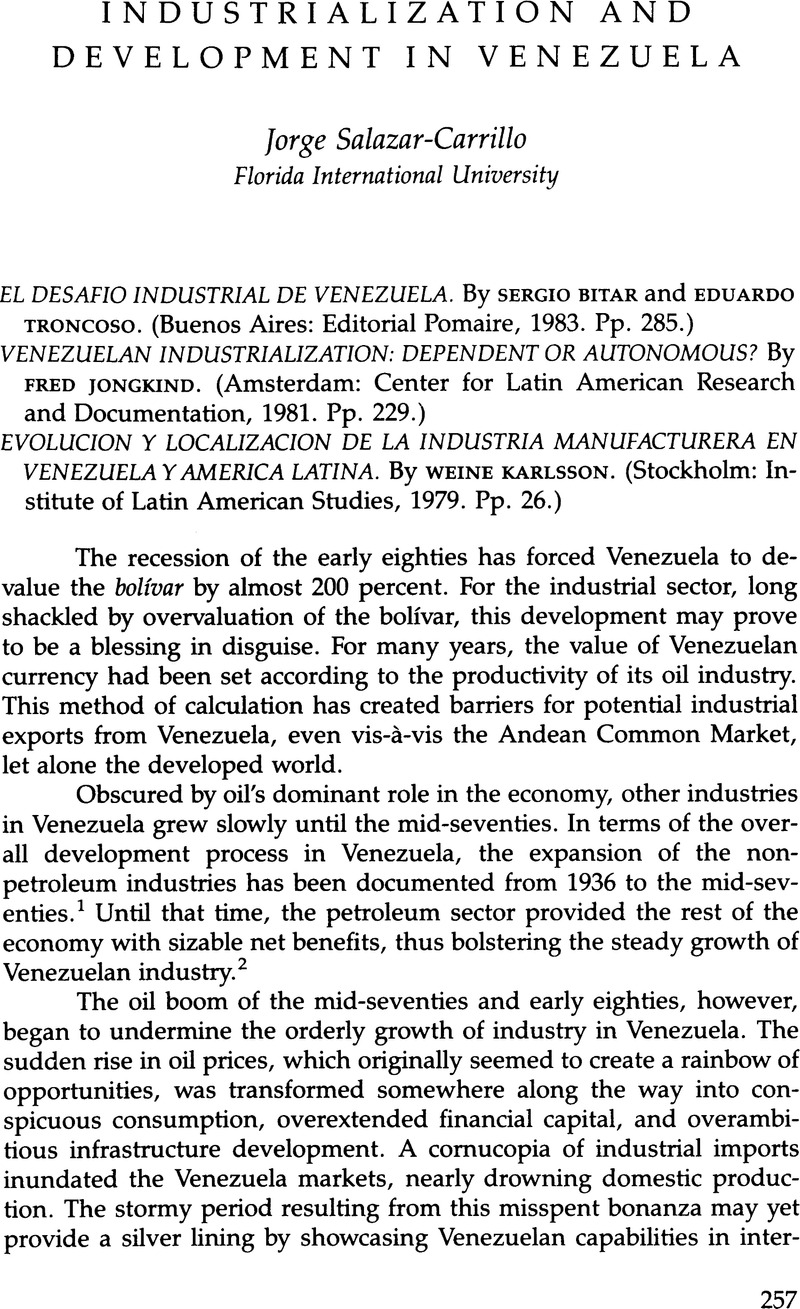Article contents
Industrialization and Development in Venezuela
Review products
Published online by Cambridge University Press: 12 October 2022
Abstract

- Type
- Review Essays
- Information
- Copyright
- Copyright © 1986 by the University of Texas Press
References
Notes
1. See Jorge Salazar-Carrillo, Oil in the Economic Development of Venezuela (New York: Praeger, 1976).
2. Of the economic components other than petroleum, agriculture has experienced uneven growth for decades while services, utilities, and construction have followed the country's increasing industrialization and urbanization. See ibid., chaps. 4–7, for a fuller treatment.
3. The official devaluation represented close to 40 percent of the bolivar's original value in comparison with the U.S. dollar.
4. The great expansion in Venezuelan foreign-exchange resources resulting from the oil boom was supplemented by heavy external borrowing. Such massive external resources led to an increased import coefficient and rising participation by foreign industrial products in aggregate demand.
5. El desafío industrial does not offer misleading general conclusions because, as mentioned earlier, the long-term pattern of Venezuelan industrialization was not altered dramatically by the 1983 change in the country's terms of trade. Industrial trends in Venezuela inexorably led toward an increasingly complex, export-oriented, and mature industrial sector.
6. The sharp devaluation of the bolívar, if not cancelled by a relatively higher inflation rate in Venezuela, may provide the initial incentive for industrial exports.
7. The reasons for such incipient development have been relatively low tariff rates, liberal import exemptions, and the absence of quotas or import controls on capital goods.
8. El desafío industrial provides only meager analysis of the Venezuelan private industrial sector, an important vehicle for realizing the goal of expanding Venezuelan industrial exports.
9. See Heinz R. Sonntag and Rafael de la Cruz, “Estado y industrialización,” Nova Americana 5 (1982):331–37. This journal is published in Torino, Italy.
10. This point was made in several places in Salazar-Carrillo, Oil in the Economic Development of Venezuela.
11. The military dictatorship established at the end of 1948 did not bring about a retrenchment in industrial policy, according to Sonntag and de la Cruz. For an opposing view, see Salazar-Carrillo, Oil in the Economic Development of Venezuela, chap. 6.
12. Ibid.
- 3
- Cited by




